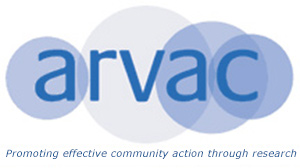Last month ARVAC co-hosted a seminar on the topic of social media and community action, at Barrow Cadbury Trust in London.
Social media seems not to have been adopted as widely by community organisations as might have been expected. Using mixed methods, our study explored the gap between claims for the transformative power of social media, and its use by grassroots community groups and organisations in England (report; summary).
Following a detailed literature review, questionnaire survey, interviews with experienced ‘champions’ of digital media, focus groups, and case studies of users, lapsed-users and non-users, we concluded that social media makes too many demands – in terms of skills, time, and the demonstration of impact – to make its adoption sufficiently straightforward for community organisations.
It cannot be said that these media contradict the processes of community action. Indeed by encouraging horizontal connections and the sharing of information, they appear to fit comfortably and even promise to enhance it. There are however strong views in the literature relating to the perceived association of Facebook (in particular) with neo-liberalism. This association raises questions about the values embedded in the systems from which enhanced levels of participation and engagement are expected to flow. It also raises questions about who benefits most from the affordances of these technologies. And yet, strikingly, we found no evidence that these issues were the subject of discussion or debate within the community sector.
From the research point of view, this point was one of several that serve to emphasise the value of mixed methodologies: some findings emerged in the literature but not in the primary material, and vice versa.
There are deceptions in the literature however. A substantial amount of research relates to the use of social media in relation to large-scale global movements, such as Arab Spring, with only a tiny amount of material describing the experiences of local community groups. It seems likely that many groups use Facebook, and often other platforms, to share information and raise awareness; but this experience seems not yet to have been studied.
The CASM study draws attention to imminent changes in the nature of community action. The literature points to a trend in which social action is increasingly stimulated and coordinated by networked individuals, exploiting the technologies - not by organisations or groups. Several representatives of organisations among our case studies expressed mild bewilderment at the nature of change associated with or reflected by social media. Our study asks, what are the implications for community organisations? This question was the subject of absorbed discussion at our seminar, but the debate has barely begun.
Kevin Harris, Third Sector Resource Centre
